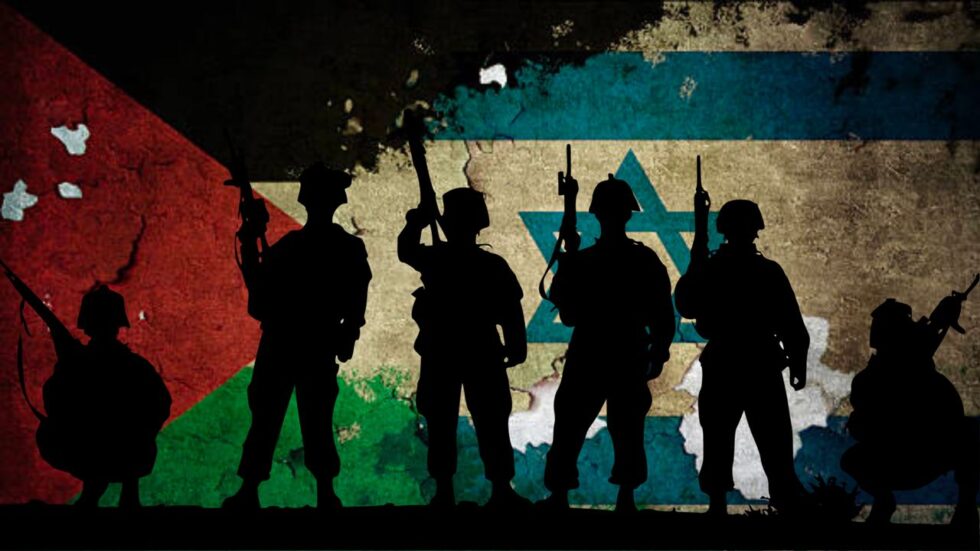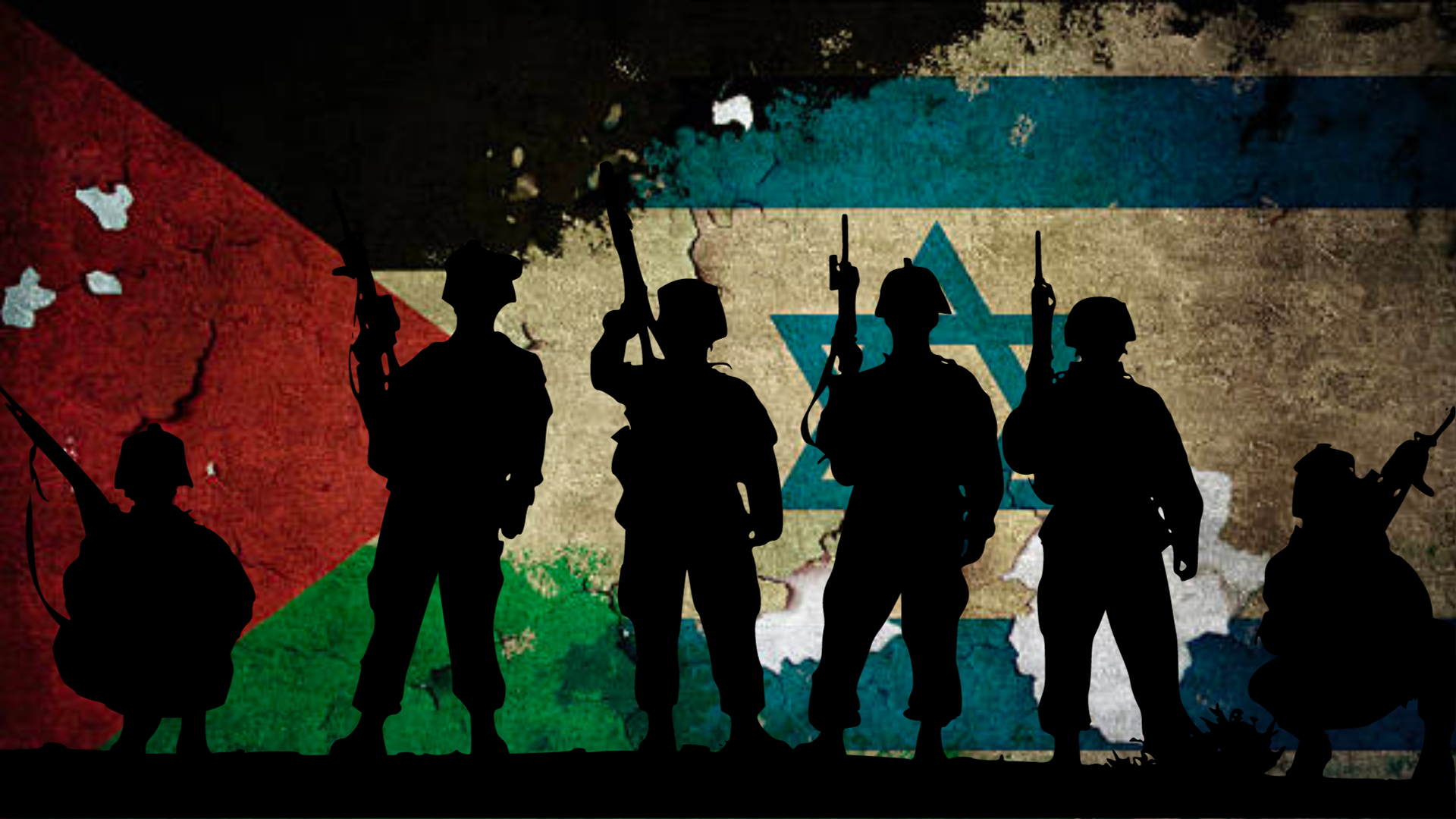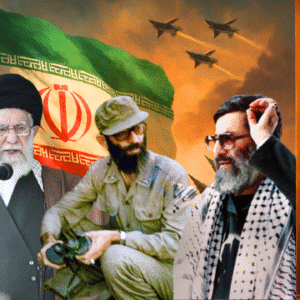Understanding Armed Resistance in Palestine

Understanding Armed Resistance in Palestine; What is its Nature, Why is it Used, and What Has it Achieved So Far?
As the Occupation’s war on Gaza rages on, many have become skeptical over the methods of armed resistance used and whether it really does have the potential to lead to liberation.
Though a natural response to an ever-climbing civilian death toll, this skepticism is also reflective of one major problem affecting our assessment of the current battle and the armed resistance’s achievements, which is the use of a skewed measure of success.
In this article, we address this skepticism, what fuels it, and how it may have affected our understanding of the armed resistance.

Understanding Armed Resistance in Palestine; What is its Nature, Why is it Used, and What Has it Achieved So Far?
As the Occupation’s war on Gaza rages on, many have become skeptical over the methods of armed resistance used and whether it really does have the potential to lead to liberation.
Though a natural response to an ever-climbing civilian death toll, this skepticism is also reflective of one major problem affecting our assessment of the current battle and the armed resistance’s achievements, which is the use of a skewed measure of success.
In this article, we address this skepticism, what fuels it, and how it may have affected our understanding of the armed resistance.
Writer: Aymun Moosavi | Copy Editor: Zainabrights | Design: Fatima El-Zein
Understanding the Measure of Viability in the Western World
One of the main fuels behind skepticism is the Western world’s treatment of resistance as inherently immoral because of its use of arms to achieve its goals. Yet, the West itself has shown through its unwavering support for an armed struggle in Ukraine, that it does not agree with its own characterization.
The US alone has sent billions of dollars worth of military aid to Ukraine, supporting its war against Russia. Western media and political commentators have blindly echoed this, painting those who have taken up arms as heroes in a battle against an aggressive regime. Here, it is made clear that the real measure for a viable armed resistance campaign in the Western world is how aligned the armed struggle is to the interests of the US rather than how ‘moral’ or ‘immoral’ it is, as discussions are often painted in the media.
As onlookers living in the West who are flooded with these daily contradictions in the media, one must be aware of these conflicting attitudes towards armed resistance and weigh them against the interests of those who create them. Does the armed struggle under question work in favor of western interests, or entirely against them? What is really motivating their dislike for its methods; is it truly a question of morality, or of how aligned the movement is with the West?
An ‘unprovoked attack’; Lack of context when discussing the offensive
Increased repression
Another issue that depletes our understanding of the armed resistance in Palestine and increases skepticism towards the movement is the lack of context over what created it. Al Aqsa Flood was not ‘unprovoked’, but rather a response to increasing far-right repression both directly by the government and its endorsement of settler violence, liberalized settlement expansion, the desecration of Al Aqsa, unwarranted raids of refugee camps, and the increasing number of Palestinian deaths. In 2022 alone, 146 were killed in the West Bank – the youngest being only 12 years old– and over 30 in the Gaza strip, mainly as a result of the occupation’s military offensive.
This lack of context also ignores the fact that armed resistance campaigns are usually born out of the response to non-violent campaigns for freedom, the most prominent being the decades-long peace process, which achieved next to nothing.
The peace process failed to prevent efforts to entrench the occupation deep into the fabric of Palestinian society, which instead saw one of the foremost markers of occupation through liberalized settlement expansion. The 1995 Taba Agreement divided territory into areas A, B, and C between the Zionist entity and the Palestinian Authority’s (PA) jurisdiction, which aimed to limit the regime’s increasing settlement expansion. The occupation ignored this agreement entirely.
Illegal settlements increased from 400,000 at the signing of the Oslo Accords to 700,000 in 2022, even in areas designated to PA control. Over the years, settlement expansion has provided the occupation with the opportunity to strategically unify disconnected settlements in and around the West Bank and Gaza while further dividing the Palestinian population, which directly acted against the Palestinians’ main goal during the peace process, which was the attainment of some form of statehood.
This complete negation of the peace process has only accelerated under the regimes most far-right government in its history, which as of June 2023, made the most significant impact to the longstanding settlement policy by fast-tracking the occupations ability to create settlements through withdrawing the need of housing approval at interim stages of the process, and transferring that power to right-wing ministers such as Bezalel Smotrich, an advocate for both liberalized settlement expansion and the complete annexation of the West Bank. This materialized earlier this year in the approval of 5,000 new settlement homes in the occupied territory.
A 2022 poll suggests that settlement expansion alone has become the primary reason why 69% of Palestinians believe the two-state solution was “no longer feasible;” recent events have confirmed their reservations. Interestingly, this was accompanied by a rise in support, especially in the West Bank, “for a return to armed intifada.” Here, it was the increasingly repressive far-right government which has pushed the Palestinian population away from an initial attitude of compromise, towards armed resistance as the only viable option to attain some form of peace.
Even those who agree that the far-right government itself is to blame for the rise of armed resistance have viewed it skeptically for entering settlements during the operation, classing them as ‘civilian infrastructure.’ This ignores the fact that settlements are one of the most tangible markers of occupation, allowing the regime to cement a “perpetual military presence” [1] in the Occupied Territories, which would naturally make it a prime target for armed groups. This is not a new method, but one typical of settler colonial entities. Frantz Fanon, a key figure during the fight for liberation in Algeria, suggested that this ‘immediate presence’ of the occupier serves as a constant reminder that the native is not free, but lives within the confines of occupation [2], making violence inflicted against it a natural, almost cathartic response.
Increased settlement expansion therefore symbolizes occupation in its primal form, and makes settlers complicit in occupation by naturalizing a ‘settler-army alliance,’ [3] where the line between the settler and Israeli Occupation Forces (IOF) become too thin to distinguish between, as one cements the presence of the other. It is the settler whose very existence perpetuates occupation, as the government depends on them to entrench it into the fabric of Palestinian society. Settlers are even frequently called on and encouraged to incite violence against Palestinians, as was seen during Smotrich’s support for the Huwara massacre carried out by settlers in March 2023, when he stated that the village should be ‘wiped out,’ just days after the incident. The confusion over what constitutes a legitimate target for an armed group can be solved by the simple fact that it is the occupying entity’s use of settlers to carry out its occupation at the ground level that has made the IOF soldier and the settler just as equal an enemy. This was the experience of other movements against settler occupation throughout history, including Mandela’s fight against apartheid in South Africa, and the FLN’s fight against settler colonialism in Algeria.
Whether there is agreement over what constitutes a legitimate method of resistance, the fact remains that armed resistance is used, and has been used throughout history for the purpose of liberation. Time would be better spent discussing what has caused it in an objective way, rather than discussing its moral acceptability. It would be a disservice to our own understanding of the current war to divorce Al Aqsa Flood from its context.
The dynamic between occupier and occupied
What this rapid entrenchment of occupation suggests is that the occupier and the occupied do not share the same notion of peace. Peace for the occupier is dependent on the eradication of the native to facilitate the creation of an ethnostate, whereas peace of the occupied is the ability to exist free from the shackles of occupation.
This is not a war between two equal parties, but rather one between the oppressed and the oppressor. It is this dynamic that limits the potential success of non-violence and popular protest in pursuit of liberation.
The settler-colonial occupying power is not interested in making concessions which force it to give up power over occupied land because purging the land of Palestinians is essential to the Zionist vision, which enshrines “racial self-segregation, racial exclusiveness and racial supremacy” [4]; it depends on a dynamic in which one group of people is oppressed to pursue these goals. This is why the peace process ultimately failed, and its agreements ignored.
This dynamic which is essential to the logic of settler colonialism has failed to show in our understanding of both the Zionist entity and the armed resistance, causing the usual surface-level analysis of the operation as nothing more than a terrorist attack against a ‘state’.
But again, this characterization is only hindering our own understanding of the resistance, which is just as much a byproduct of occupation as the ones that came before it.
A skewed measure of success
In the West, success is often measured in material terms. An operation is usually deemed successful based on how advanced the technology of its weaponry is, how many bombs were dropped, and how many casualties were incurred in comparison to the enemy. This was Netanyahu’s measure when he declared that the regime would ‘win this war’ but at a heavy cost, which was a nod to the only method they usually employ during war; attempting to overwhelm the entire population with severe bombardment even of civilian infrastructure, and an influx of IOF forces on the ground.
Many of us have adopted a western approach to measuring success, by only measuring it in these quantifiable terms. When seeing events unfold, we too begin to ask ourselves who has dropped the most bombs, who has the most man-power, and who has the better technology, as we are told that these factors make a party more likely to ‘win.’ According to this logic, armed resistance would be an inherently obsolete cause because it cannot compete in these areas and will end in more destruction and greater distance from peace; in other words, the ends do not justify the means. However, what we do not question is what exactly it means to ‘win,’ and whether these parameters are the only indicators of success.
The occupier and the occupied have not only different perceptions of peace, but also different perceptions of success.
Whereas the Zionist entity sees success only through the number of rockets launched and number of casualties incurred, the resistance measures success in morale, the ability to expose the weaknesses of the Zionist entity, to keep them on edge, and to negotiate from a position of strength. To ‘win’ for the occupied is not just about overwhelming the enemy through material capabilities, but to do so with strategy – something that for the Zionist entity, cannot be bought with US funding.
The Western measure of success is part of an equation built in the age of empires, but it is no longer applicable.
Balance of power is now measured on new terms, and it is these terms that have repeatedly exposed the Zionist entity’s weaknesses. In a matter of days, the Resistance was able to shame what has been deemed as the most advanced military in West Asia with the largest foreign aid from the US since World War 1.
Questions have begun to rise over why the occupation’s military is still not prepared for war, despite having over 600,000 forces in total, and why it is that despite being the occupying force controlling and overseeing the area, they have not been able to rid Gaza of Hamas, or Palestine of the wider armed resistance. These are questions that can be explained when using a more accurate measure of success.
Though images and videos flooding our screens of the atrocities carried out by the occupation can waver our hope for the Palestinian cause, one must remember that the ability to inflict atrocities on a population does not equate to success.
Despite the occupations brutal campaign, not only employed in its current war on Gaza, but in its 2008-2009, 2012, 2014, and 2021 offensives, it has still failed to get them any closer to achieving their main goal, which is the complete eradication of Hamas, and any form of resistance to occupation specifically in the Occupied Territories. Here, it is clear that western measures of success do not compensate for a lack of strategy and tactileness on the part of the occupation.
If we know that the Western measure of success is outdated and has failed to account for the weaknesses in the occupation’s strategy, and has led to misunderstandings over the strengths of the resistance, what can the resistance’s measure of success tell us about what Al Aqsa Flood has achieved thus far?
What Has the Resistance Achieved
1. Bringing the Palestinian cause to public attention.
For the first time, we have seen international public consensus on the atrocities of the occupation constituting to a fullscale genocide. This has tarnished the image of what was once hailed the “only democracy in the Middle East,” and has put pressure on its allies (mainly the US) to rethink its approach to an entity that is not fulfilling its functional role as an outpost in West Asia, and is instead draining its resources and time.
2. Putting the Palestinian cause back on the international agenda.
The Palestinian struggle cannot be ignored. In arresting the world’s attention, it has also forced the international community to confront the decaying peace process and two-state solution. They will now need to move discussions beyond this, as this war has made clear that occupation is becoming increasingly more difficult to justify.
3. Cementing the new equation.
For the first time, the resistance in Palestine has gone from a defensive posture to an offensive one. It no longer reacts, but decides when and how it will attack and sets the terms of the engagement. The occupation was taken by surprise, because this battle was not waged against anything specific, but the regime as a whole. This opens up the possibility of more surprise attacks in the future, heightened by the fact that their capabilities are still unknown, including that of the wider resistance in Lebanon, Syria, Iraq, Iran and Yemen. The resistance has ensured that the Palestinians can no longer be victimized with ease; the regime must now think carefully about every decision made if they want to avoid anything close to a repeat of Al Aqsa Flood. They have given the occupation something to fear.
4. Evacuation of settlements.
As of October 22nd, the regime has announced the evacuation of 43 towns and settlements following further battles with the Lebanese resistance. As the resistance in Gaza continues, the occupation was forced to order a complete evacuation of settlements like Ashkelon; a settlement housing over 130,000 settlers. This operation has not only allowed the resistance to liberate land, but has called into question the settlers perception of peace, and will certainly fuel settler anxieties in the future, which could mean a complete abandonment of some areas by the regime. It has also exacerbated growing disdain for Benjamin Netanyahu and his government.
5. Putting a halt to normalization attempts within the region.
Muslim countries especially have been forced to rethink normalizing ties with the Zionist entity, whether this results in only a temporary pause or not. It has forced them to address the issue of Palestine once again.
6. Exposing the fragility of the Zionist entity.
War after war, the Zionist entity is still unable to understand the capabilities of the resistance despite claiming to have one of the most advanced militaries in the world. It has been scrambling through random outbursts of violence, but these methods are outdated and are causing mass outrage. As its costs begin to outweigh its benefits and international pressure mounts, the regime’s western allies may have to rethink their relationship with the occupying entity, especially when it has become clear that the resistance is here to stay.
These changes could only have been achieved by the armed resistance; it has exposed weaknesses within the Zionist entity in a way that non-violence simply cannot do. This is not to say that non-violent methods have no purpose, but what we see throughout history is that to achieve substantial change, force must be used.
The experience in Palestine has been no different to that of Mandela’s African National Congress (ANC) in South Africa or The National Liberation Front (FLN) in Algeria; the colonizer will not choose to change the status quo until there is a tangible threat. This is why most liberation movements throughout history have been sought on violent terms – not because nonviolence and popular protest were not tried, but for the very fact that they had, and were either met with force to quell it, or radio silence while the entrenchment of occupation continued.
It is therefore important not to divorce the rise of any resistance movement from its context. Ignoring critical context like the desecration of Al Aqsa, the countless offensives carried out in Gaza from 2008 to today, the countless Jenin and Balata refugee camp raids, a liberalized settlement expansion under the right-wing government, and a failed peace process just to name a few, limits our understanding of the current situation, as in all of these events lay the pieces of the puzzle which explain what we witnessed on October 7th.
It is poignant to examine the mainstream media’s misrepresentation of the war – if we cannot change it, we should at least be aware of the effects it can have on our understanding of the resistance and the trajectory of the war. Information warfare is designed to make us question the morality of armed resistance as a whole, and turn our support away from the resistance, even subliminally. This could be in the form of telling blatant lies such as the beheaded babies, mislabelling Palestinian suffering as ‘Israeli’ suffering, and pushing blame of a hospital attack aimed at civilians on Hamas itself. These attempts are not only designed to make us leave the camp of the oppressed, but to make atrocities against all Gazans justifiable in the public eye.
On the odd occasion that the regime does take accountability for its attacks, the pictures they wave proudly of their atrocities designed to make us lose hope in the Palestinian cause are in reality nothing but an attempt to detract from the successes of the armed movement and divert attention away from its own failures in battle.
Writer: Aymun Moosavi | Copy Editor: Zainabrights | Design: Fatima El-Zein
- Hammami, R., Tamari S. (2001). The Second Uprising: End or New Beginning? Journal of Palestinian Studies. 30(2), p.13.
- Fanon, F. (1967) Wretched of the Earth. Penguin Group P.28.
- Hammami & Tamari (2001), p.22.
- Sayegh, F. A. (1965). Zionist colonialism in Palestine. Palestine Research Center. p.21-22.
If you value our journalism…
TMJ News is committed to remaining an independent, reader-funded news platform. A small donation from our valuable readers like you keeps us running so that we can keep our reporting open to all! We’ve launched a fundraising campaign to raise the $10,000 we need to meet our publishing costs this year, and it’d mean the world to us if you’d make a monthly or one-time donation to help. If you value what we publish and agree that our world needs alternative voices like ours in the media, please give what you can today.




